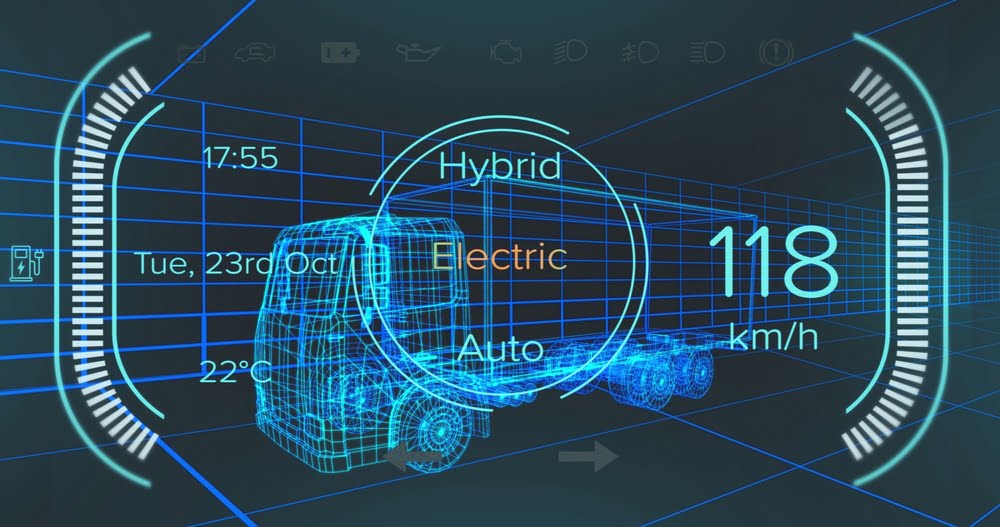Exonerating Drivers through Video Telematics
Truck drivers often find themselves entangled in incidents where facts can be disputed and blame wrongly assigned. Video telematics, however, is revolutionizing this narrative. In the US, road accidents remain a significant concern. In 2021 alone, there were almost 500,000 crashes involving large trucks in the US, where 22% of those crashes resulted in injuries.
So what is video telematics? Video telematics is a technology that combines video cameras and data analytics to provide insights into fleet and driver performance, safety, and operational efficiency. It integrates video cameras with traditional telematics data, such as vehicle location, speed, and driving patterns, to give a comprehensive view of what’s happening both inside and outside the vehicle. This information can be used for real-time coaching, accident prevention, and evidence in the case of incidents, helping to improve driver safety, reduce costs, and optimize fleet operations.
Telematics plays a crucial role in exonerating drivers as it provides objective, data-driven evidence about vehicle use and driver behavior. This technology records crucial information like speed, location, route, and driving behavior, offering a clear, unbiased account of events leading up to an incident. Video telematics can help fleet managers improve safety, reduce costs, and gain a greater level of operational efficiency. In the event of an accident or legal dispute, this data can be crucial in proving compliance with traffic laws, demonstrating safe driving habits, or establishing that the vehicle was in good condition.
By providing accurate and detailed data, telematics helps in exonerating the circumstances surrounding an incident, thereby potentially exonerating drivers from wrongful blame.

Can Video Telematics Clear a Driver’s Name?
In situations where your word is against another driver’s, video evidence can provide a clear picture of what actually happened. Imagine a scenario where you’re accused of causing a collision. Telematics footage can show you were braking safely and obeying traffic laws, exonerating you from blame.
Here’s what makes video telematics so compelling:
- Unbiased Evidence:
Video telematics offers unbiased, third-person video evidence during incidents, distinguishing between responsible driving and negligence. This objective documentation is invaluable for investigations, helping to clear wrongfully accused drivers.
- Comprehensive Data for Investigations:
Beyond video, telematics systems collect data on speed, location, and driving patterns, offering comprehensive evidence that supports a driver’s account of events, crucial in accident investigations and insurance claims. - Fraud Prevention:
By providing irrefutable evidence of events, video telematics prevents fraudulent insurance claims, protecting drivers and ensuring fair assessments by insurance companies. - Privacy Concerns:
Despite its benefits, the use of video telematics raises privacy concerns. Companies must balance safety and accountability with respect for privacy, ensuring transparent policies on data use and protection.
While video telematics can’t guarantee a clean slate, it can be a valuable tool for defensive drivers. By providing objective evidence of your safe driving habits, you can potentially avoid undeserved penalties and keep your insurance rates low.
Video telematics plays a crucial role in exonerating drivers as it provides visual and objective evidence of incidents on the road. This technology captures real-time footage of what happens both inside and outside the vehicle, offering a clear and unbiased account of events as they unfold. In case of an accident or dispute, this footage can be invaluable in determining the actual sequence of events, clarifying issues like road conditions, traffic signals, and the actions of other drivers. By providing this concrete visual evidence, video telematics can help to establish the truth in situations where a driver’s word might be questioned, effectively proving innocence or fault and ensuring a fair resolution of disputes or claims.

How Does Video Telematics Benefit Your Vehicle Insurance?
Telematics brings a host of benefits to vehicle insurance, fundamentally changing how premiums and claims are handled. By collecting detailed data on driving behavior, such as speed, acceleration patterns, and overall driving style, telematics allows insurers to assess risk more accurately. This means that safe drivers can enjoy lower premiums, as their driving habits are directly reflected in their risk profile. In the event of an accident, telematics provides invaluable data for claims processing, helping to quickly ascertain fault and expedite claims. This reduces the likelihood of fraudulent claims, as the data provides an objective account of events. Furthermore, the implementation of usage-based insurance models, where premiums are based on actual driving behavior rather than estimated risk, can lead to significant savings for responsible drivers. Overall, telematics introduces a more personalized, fair, and efficient approach to vehicle insurance.
In summary, the integration of telematics in insurance offers a more transparent, accurate, and fair approach to insurance claims, fraud prevention, and premium calculation. It shifts the focus from estimations and generalizations to data-driven insights, benefiting both insurers and policyholders.
To encourage the adoption of telematics for safety and legal protection, it’s essential to highlight its benefits to drivers and fleet operators. Raising awareness about how telematics can enhance road safety, reduce accident risks, and provide critical support in legal scenarios can motivate adoption. Additionally, offering incentives such as reduced insurance premiums for telematics users can be a persuasive approach. Collaborations between telematics providers, insurance companies, and regulatory bodies can also promote wider acceptance and implementation. Educating drivers about the ease of use and the protection telematics offers can further facilitate its integration into everyday driving practices.
How is Jungo taking part in the telematic revolution?
Jungo is at the forefront of integrating AI with telematics to enhance fleet safety and operations. Jungo’s VuDrive is an AI dual-camera that provides fleets with real-time alerts on risky drivers, focusing on issues like distraction, phone use, seat belt wearing, harsh braking and speed detection. This accident prevention system monitors the quality of driving and helps fleets to reduce road accidents and vehicle downtime, lower insurance costs and save lives. VuDrive includes real-time alerts for both driver and fleet manager, event recording, trend analysis, driver scoring, all accessible via the cloud-based fleet manager platform. VuDrive enables fleets to identify and improve risky drivers, and prevent future accidents.
Contact Jungo to learn how our AI dashcam is reducing road accidents caused by driver distraction, lowers insurance costs and saves lives!

